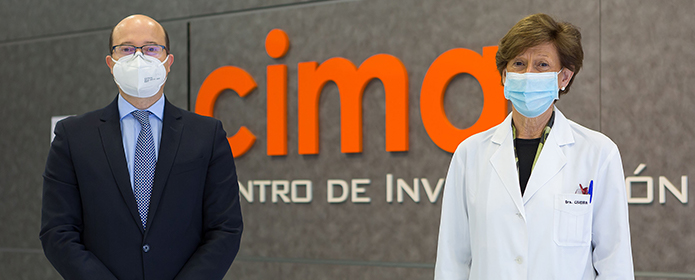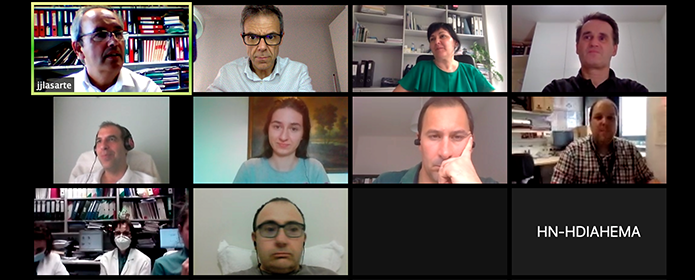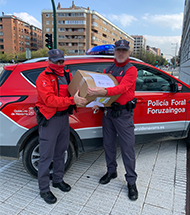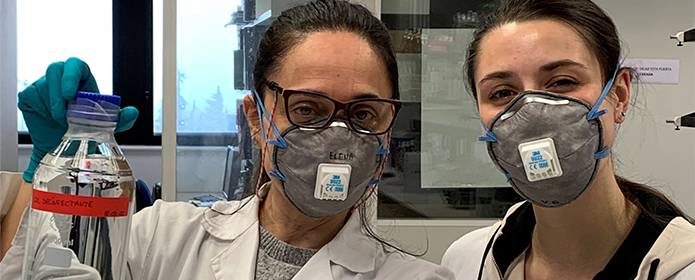The Cima University of Navarra makes available to the academic community a diagnostic technique for COVID-19 that is more efficient than those currently available.
It has developed a novel RNA extraction method that, coupled with a quantitative RT-PCR reaction, detects asymptomatic cases with more than 95% sensitivity.

The Cima University of Navarra has developed a COVID-19 diagnostic technique that is more efficient than those currently available. It is a ribonucleic acid (RNA) extraction method that allows processing large quantities of samples in parallel, independently of commercial extraction kits. With the incorporation of a multichannel robot, the Cima is able to analyze more than 2,000 tests per day, which will allow complete sampling to detect COVID cases (both symptomatic and asymptomatic) in groups of interest.
Polymerase chain reaction (PCR) is a technique capable of detecting SARS-CoV-2 virus RNA in biological samples. Although there are several standard PCR protocols designed by entities such as the Charité Hospital (Germany) or the American CDC, all of them rely on a first RNA extraction. This step is one of the main bottlenecks as the current RNA extraction methodology has limited processing and does not allow testing large populations.
"At high school Weizmann in Israel, I accumulated years of experience analyzing RNA expression profiles in large cohorts of samples using "high throughput" technologies. I had also developed new techniques to be able to perform this subject of programs of study on very sparse samples, even in single cells. Given the current status caused by COVID-19, we set out to apply this knowledge to test hundreds or thousands of samples at once for SARS-CoV-2 coronavirus RNA," explains Dr. David Lara-Astiaso, researcher from the University of Cambridge who spent time at Cima to promote this project in Spain.
Novel RNA extraction methodThe methodology implemented at Cima improves the RNA extraction process used to perform the COVID detection technique by RT-PCR. "Normally, commercial kits require an extraction procedure guide , based on the use of columns and centrifuges. With our system, RNA extraction is done in a plate that fits 96 samples. No centrifugations are needed because we use magnetic beads that bind the RNA. This allows us to use a magnet that attracts the beads to the side of the tube and purifies the RNA from many samples at the same time.
Once the RNA is extracted, it is used in an RT-qPCR (or quantitative PCR) reaction that can detect the presence of viral RNA and even roughly determine the viral load present at sample. By automating this process, researchers at Cima can process 384 samples in less than two hours. "We can currently analyze about 1,000 samples per day, but these numbers can be scaled up depending on the PCR machines available, without considerable increase in manpower. The other great advantage of this process is that the amount of reagents used is lower compared to the usual COVID detection protocols," adds Dr. Josep María Argemí, researcher of Cima and one of the participants in this project.
Scientists at Cima have confirmed that this technique offers more than 95% sensitivity for detecting asymptomatic cases. In addition, thanks to a donation from the Ramón Areces Foundation, Cima has incorporated an Agilent Bravo multichannel robot that allows this process to be fully automated and doubles the sample processing capacity with minimal intervention from staff. This reduces time, increases reproducibility and reduces the possibility of human error or contamination from one sample to another.
 |
Drs. Lara-Astiaso and Argemí explain that, given the possibility of a new expansion of the coronavirus, "it is estimated that the majority of the population (80-90%) will not be immunized. This is very relevant in terms of deconfinement. Infected individuals are highly contagious in the first days of infection. At that time, PCR is very sensitive, whereas serological tests would never be able to detect the presence of the virus in those first 5 days of the disease, which is approximately the time it takes for the organism to develop antibodies. We believe that testing large groups of people by PCR is a crucial element in preventing a resurgence or second wave of COVID".
The Cima has made itself available to the health authorities to test those populations and communities to be identified and thus cooperate in a more accurate, rapid and safe de-escalation of containment.
It has also published the protocol for free access to the academic community: https://www.protocols.io/view/guide -silane-magnetic-bead-based-high-throughput-be8bjhsn




